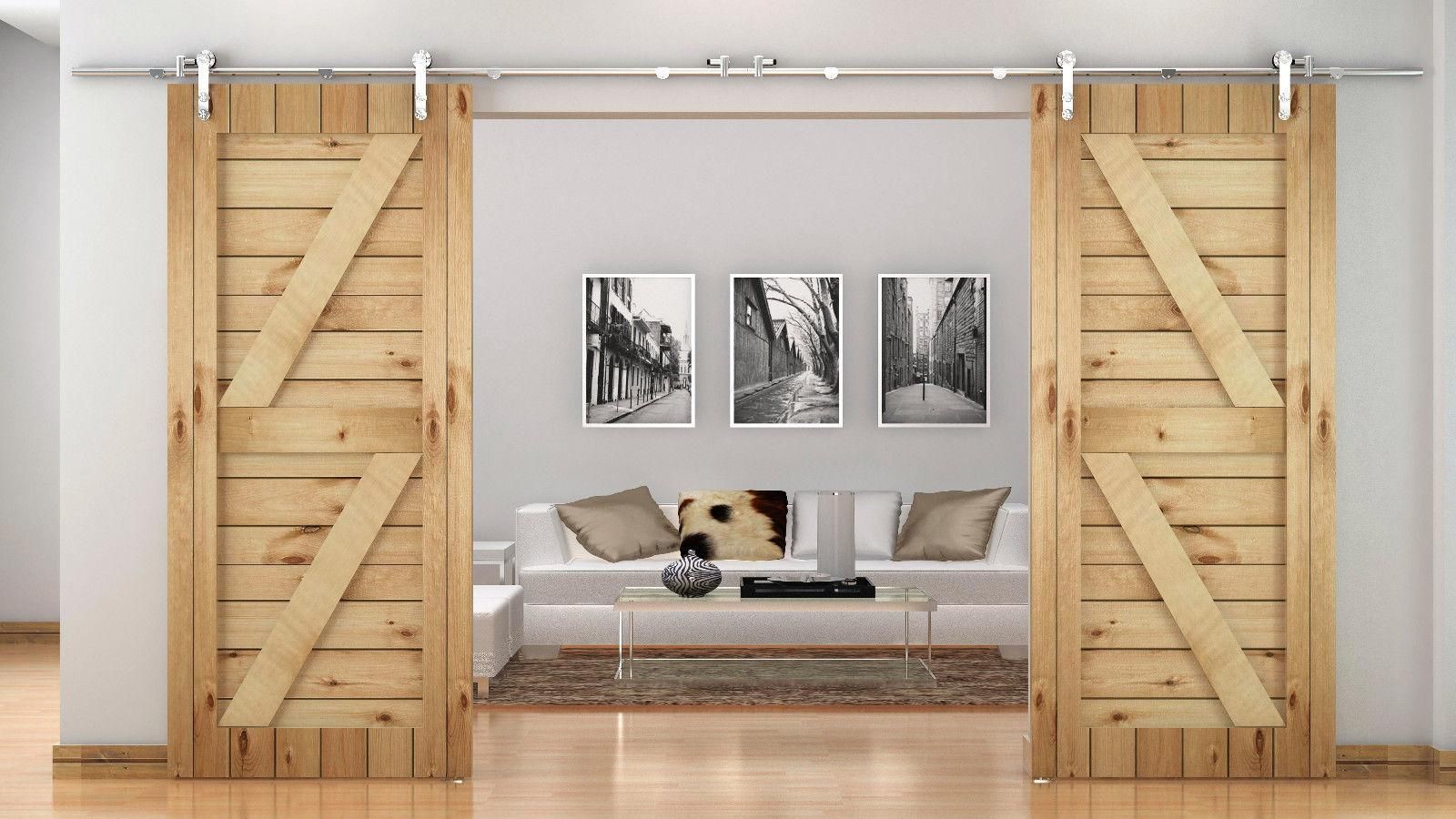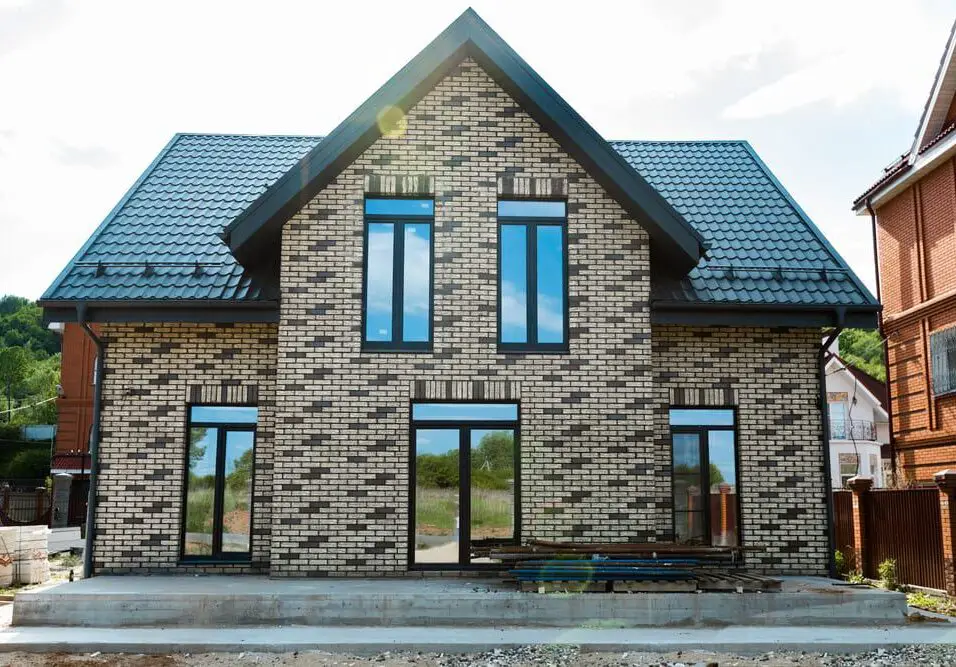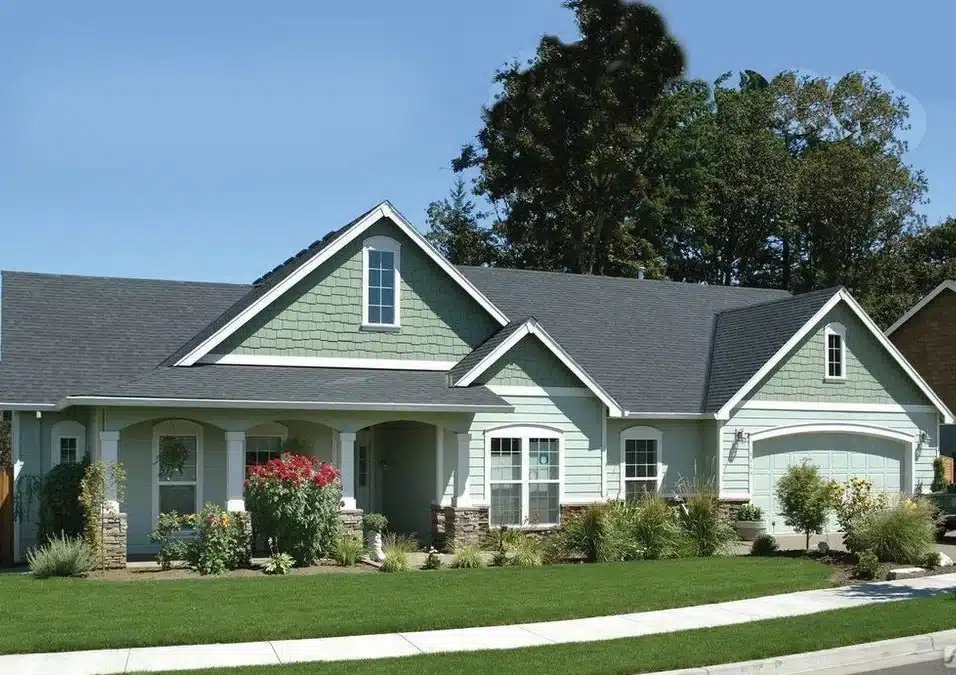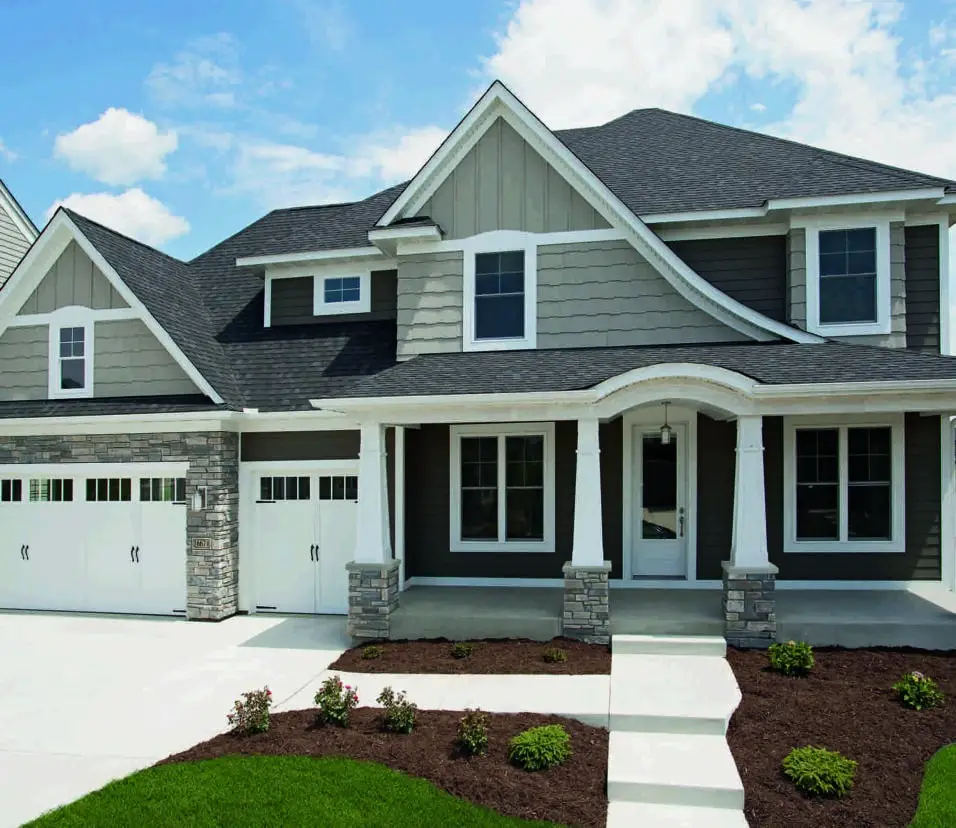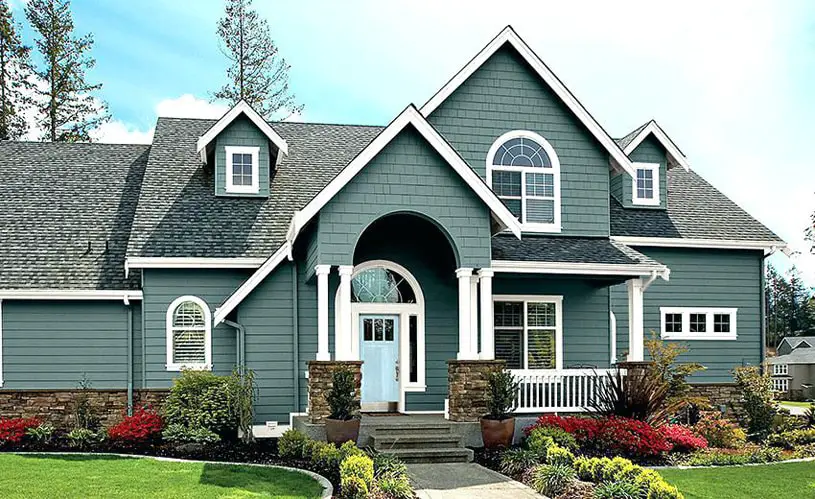How To Build Exterior Barn Doors
Introduction
Learn How To Make Exterior Barn Doors: How to Make Exterior Barn Doors Barn doors are attractive external features because they bring style and function. This step-by-step lesson will help you add to a rural room or find a durable door solution.
Crafting exterior barn doors may seem like a complex task, but with meticulous planning and the guidance provided here, you’ll find the process both rewarding and achievable. Throughout this guide, we’ll walk you through each stage of the construction journey, from selecting the right materials and measurements to assembling and finishing the doors. Clear instructions, accompanied by visual aids, will ensure that you embark on this project with confidence.
By building your own barn doors exterior , you not only customize your home’s entrance but also engage in a hands-on experience that highlights your creative prowess. As you delve into this DIY endeavor, remember that patience and precision are key, resulting in doors that not only enhance your property’s allure but also stand the test of time.

Can barn doors be used for exterior?
1. Outdoor Entryways. Exterior barn door hardware can be utilized in any outdoor space.
Exterior barn doors provide several benefits, including:
- Space-Saving: Barn doors slide horizontally along a track, which means they don’t swing open and take up floor space. This makes them ideal for tight exterior spaces, such as patios, balconies, and sheds.
- Aesthetic Appeal: Exterior barn doors offer a rustic and charming look that can enhance the overall design of a building. They are available in various styles, finishes, and materials, making it easy to match the door to your architectural preferences.
- Versatility: These doors are versatile and can be used for various exterior purposes, including patio entrances, outdoor kitchens, pool houses, and more.
- Weather Resistance: High-quality exterior barn doors are designed to withstand the elements. They are often constructed from durable materials and equipped with weather seals to keep out wind, rain, and cold.
- Easy Operation: Barn doors are easy to operate and can be opened partially or fully, allowing you to control the amount of ventilation and natural light entering a space.
Proper installation is also crucial to ensure the doors are secure and seal well to protect against weather conditions.
What are exterior barn doors made of?
Cedar, teak and bamboo are excellent choices for outdoor-rated barn door material. Exterior barn doors are crafted from a variety of materials, each with its own set of advantages.
Here are some common materials used for exterior barn doors:
- Wood: Wooden barn doors are a classic choice and offer a rustic, warm, and timeless appearance. They can be made from a range of wood species, including cedar, redwood, pine, and oak. To be used outdoors, the wood should be treated or naturally resistant to moisture and insects. Proper finishing and sealing are essential to protect against the elements.
- Fiberglass: Fiberglass barn doors are an excellent option for exterior use because they are highly durable, low-maintenance, and resist warping, rotting, and insect damage. They can mimic the look of wood and are available in various finishes and colors.
- Metal: Steel or aluminum barn doors are robust and weather-resistant.
- Composite: Composite barn doors are a blend of wood fibers and synthetic materials. They combine the aesthetics of wood with the durability and low maintenance of synthetic materials. They are less likely to warp, rot, or crack compared to natural wood.
- Glass: For a contemporary or industrial look, glass barn doors can be used on exteriors. These doors are typically framed with metal or aluminum and may have frosted or tempered glass panels.
What is barn door style?
Barn door style refers to a design aesthetic that takes inspiration from traditional barn doors typically found on agricultural structures. This style has gained popularity in interior and exterior home design for its rustic, charming, and functional characteristics.
Here are some key elements that define barn door style:
- Sliding Mechanism: Barn doors are known for their unique sliding mechanism. Instead of swinging open like traditional doors, barn doors hang from a track system and slide horizontally. This space-saving feature is one of the hallmarks of barn door style.
- Wood: Barn doors are often constructed from wood, which contributes to their warm and rustic appearance. Reclaimed or weathered wood is frequently used to enhance the antique and well-worn look associated with barns.
- Simplicity: Barn doors tend to have clean and simple lines, with minimal ornamentation. They emphasize functionality and practicality over intricate detailing.
- Hardware: The hardware used in barn door style is a key visual element. Large, visible rollers and a track system are common features. These can be made from metal, often with a distressed or matte finish.
- Versatility: Barn doors can be adapted to various design styles, from farmhouse and rustic to modern and industrial. They are used for both interior and exterior applications, such as room dividers, closet doors, pantry doors, and even as decorative elements.
- Customization: One of the appealing aspects of barn door style is the opportunity for customization. Homeowners can choose the type of wood, finish, hardware, and even the door’s size and shape to suit their design preferences.
What material is used for barn door header board?
To safely mount the door, you will need a header board to carry the load of the door without having to open the drywall to modify the studs. It’s very important that you only use clear straight lumber for the head casing. A 1×4 in clear pine, poplar, or other hardwood is recommended.
Common materials for barn door headers include:
- Solid Wood: Solid wood headers are a popular choice because they provide both strength and a rustic aesthetic that complements barn door style. Hardwoods like oak, maple, or pine are often used. The wood can be stained or finished to match or contrast with the door itself.
- Plywood: Plywood headers are another viable option, especially when budget constraints are a concern. Plywood is engineered for strength and can provide ample support for the barn door track. It’s often covered with a veneer for a more finished appearance.
- MDF (Medium-Density Fiberboard): MDF is a composite material made from wood fibers and resin. MDF can be painted to match the door or other elements in the room.
- Metal: In some cases, metal headers may be used, particularly for industrial or modern-style barn doors. Metal headers should be appropriately sized and reinforced to handle the weight of the door and track.
When a material for the barn door header board, it should match both the overall style of the door and the room where it will be placed. This is very important to make sure that the header is attached to the wall studs to avoid accidents or damage. When heavy doors are involved or when changes need to be made to the wall to make room for the header, it is best to have a professional do the work.
Are barn doors hollow or solid?
Your barn door can have a hollow or solid core. A barn door with a hollow core is lighter and cheaper. While not completely hollow, these are typically filled with a combination of synthetic materials and wood, making them less dense.
Barn doors can be either hollow or solid, depending on their construction and purpose. Here’s a breakdown of both types:
- Solid Barn Doors: These doors are robust, durable, and provide good sound insulation.
- Hollow Core Barn Doors: Hollow core barn doors have a honeycomb or grid-like internal structure sandwiched between two outer layers of material, typically plywood or MDF. These doors are lighter and more affordable than solid doors. They are suitable for interior applications where sound insulation and extreme durability are not a primary concern.
The choice between hollow and solid barn doors depends on various factors, including your budget, the intended use, and the desired aesthetic. Solid doors are typically more substantial and provide better sound insulation, making them suitable for spaces like bedrooms or bathrooms. Hollow core doors are more cost-effective and are commonly used for closet doors or other interior applications.
Can you use plywood for a barn door?
Tools for Barn Doors
We were lucky enough to already own all of the tools, etc needed for the project. All we bought was two birch pieces of plywood, and a handle for each door, bringing us to just under $100 per door!
Yes, plywood can be used to make a barn door, and it’s a popular choice for several reasons. Plywood is an engineered wood product made by gluing together thin layers or plies of wood veneer. Here are some considerations when using plywood for a barn door:
- Affordability: Plywood is generally more budget-friendly compared to solid wood, making it an excellent choice if you’re looking for a cost-effective option for your barn door project.
- Stability: High-quality plywood is stable and less prone to warping or twisting compared to solid wood. This stability ensures that your barn door will maintain its shape over time, especially in varying humidity conditions.
- Customization: Plywood is available in various grades, with different veneers and finishes. This allows for customization in terms of appearance and style. You can choose from different wood veneers, including oak, birch, or pine, and finish it to match your desired look.
- Strength: Plywood is strong and durable, making it suitable for a variety of barn door designs and sizes. It can handle the weight of hardware and provide reliable performance.
- Painting and Finishing: Plywood accepts paint, stain, and finishes well, giving you the flexibility to achieve the desired appearance for your barn door.
When using plywood for a barn door, it’s essential to select the appropriate grade and thickness based on your needs. Thicker plywood provides more stability and strength. Additionally, proper sealing and finishing are important to protect the door from moisture and environmental factors, especially if it’s an exterior barn door.
What are the benefits of barn doors?
Sliding barn doors are ideal for tight spaces. Swinging doors need room to open. As a result, they may block walkways or damage walls when in small spaces. Barn doors, on the other hand, require far less floor space, as they rest flat up against the wall.
Barn doors offer several benefits that make them a popular choice in interior design:
- Space-Saving: Barn doors slide along a track rather than swinging open, making them ideal for rooms with limited space. They don’t encroach on floor space like traditional hinged doors.
- Aesthetic Appeal: Barn doors add a rustic, charming, and distinctive visual element to a room. They come in various styles, finishes, and materials, allowing you to tailor them to your design preferences.
- Versatility: Barn doors can be used in a wide range of interior applications, including bedroom and bathroom entrances, closets, pantries, and even as room dividers. They offer flexibility in how you configure your living spaces.
- Ease of Operation: Sliding barn doors are easy to operate. Their smooth and silent gliding mechanism makes them user-friendly for all ages.
- Accessibility: Barn doors can be an excellent choice for individuals with mobility challenges, as they have a wide opening and require minimal effort to slide open or closed.
- Natural Light and Ventilation: Sliding barn doors can be partially opened to allow natural light and ventilation while maintaining privacy or separation between spaces.
- Sound Insulation: Solid barn doors provide better sound insulation compared to traditional hollow-core doors, making them suitable for bedrooms or other spaces where noise control is important.
- Customization: Barn doors can be customized in terms of size, design, and hardware, allowing you to create a unique look that complements your interior décor.
Are barn doors expensive?
The cost of a barn door itself and the tracking hardware ranges from $250 to $2,500. The type of material impacts cost, as barn doors can be made of wood, metal, MDF, or vinyl. Pocket doors cost anywhere from $60 to $1,000, depending on the size, type of material, and style. When using plywood for a barn door, it’s essential to select the appropriate grade and thickness based on your needs. Thicker plywood provides more stability and strength. Additionally, proper sealing and finishing are important to protect the door from moisture and environmental factors, especially if it’s an exterior barn door.
Here’s a breakdown of the cost considerations:
- Material: The choice of material significantly impacts the cost. Solid wood barn doors tend to be more expensive than doors made of plywood or MDF. Reclaimed or specialty woods can also increase the cost.
- Size: Larger doors require more materials and may have higher hardware costs, so they tend to be more expensive than smaller doors.
- Design Complexity: Elaborate designs, carving, or intricate details can add to the cost due to the additional labor and craftsmanship involved.
- Hardware: The type and quality of hardware, such as the track system, handles, and pulls, can vary in price. High-quality, stylish hardware options may increase the overall cost.
- Customization: Customized barn doors that are made to fit specific dimensions or design preferences often come at a premium compared to off-the-shelf options.
- Finish: The finish of the door, including paint or stain, can affect the cost. Specialty finishes or custom colors may incur additional charges.
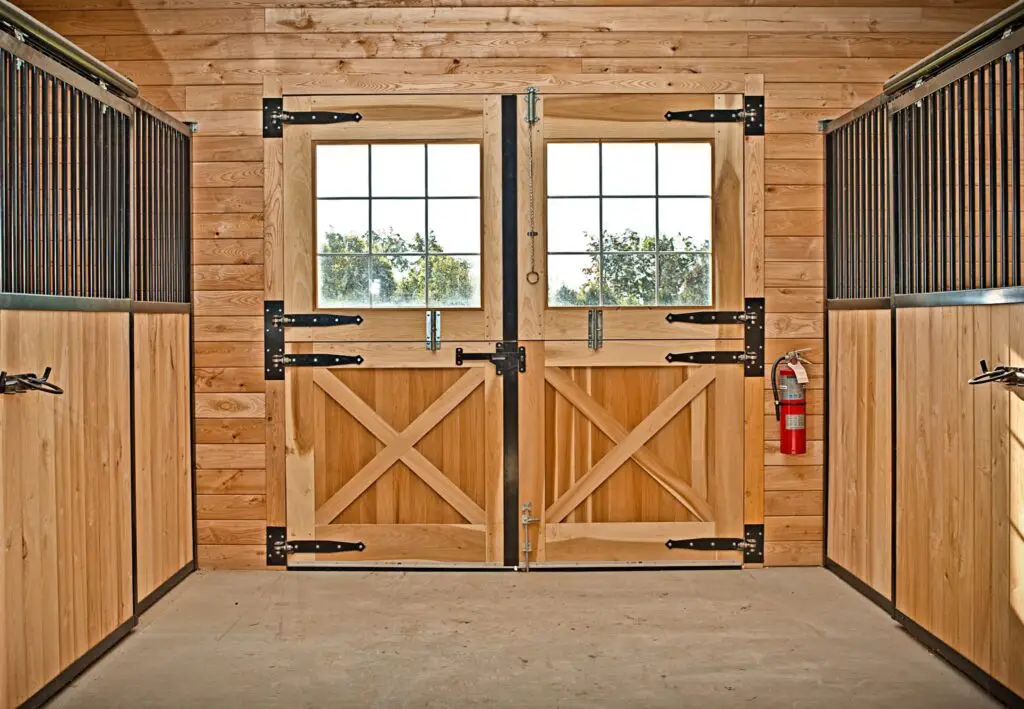
Conclusion
The process of crafting exterior barn doors is a rewarding endeavor that offers both practicality and a touch of rustic elegance. By following the detailed steps outlined in this guide, you’ve gained the skills to design, construct, and install doors that not only complement your property but also reflect your personal style.
Your journey from selecting the materials to applying the finishing touches has not only resulted in functional exterior barn doors but has also deepened your understanding of woodworking and craftsmanship. As you step back and admire your completed doors, take pride in the fact that you’ve achieved a project that merges aesthetics with utility, enhancing the visual appeal and value of your home.
As you continue honing your DIY skills, the experience gained from building exterior barn doors can serve as a foundation for future projects, inspiring you to more aspects of your living space with your creative ingenuity. By building your own barn doors exterior , you not only your home’s entrance but also engage in a experience that highlights your creative prowess. As you delve into this DIY remember that patience and are key, resulting in doors that not only enhance your property’s allure but also stand the test of time.



